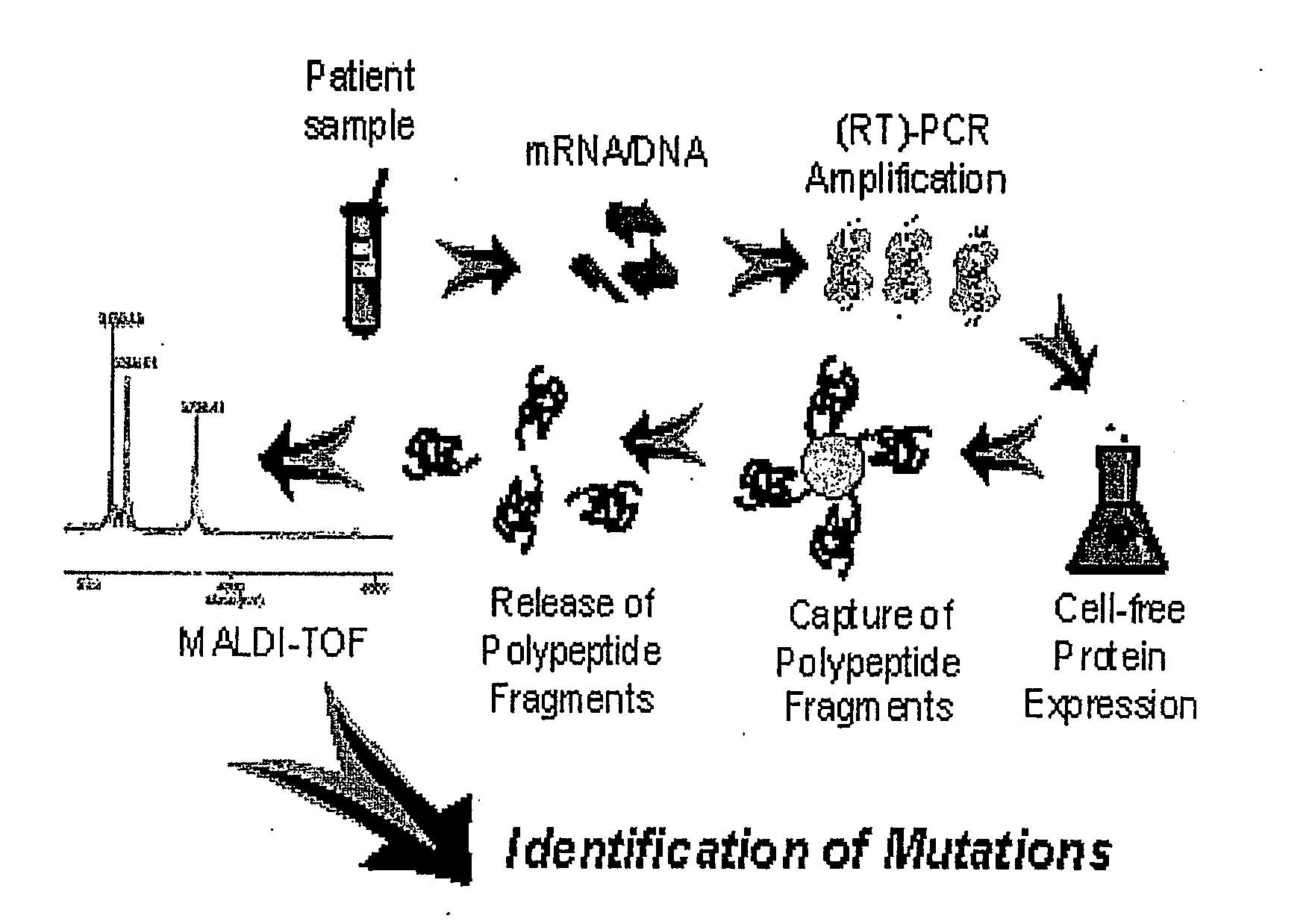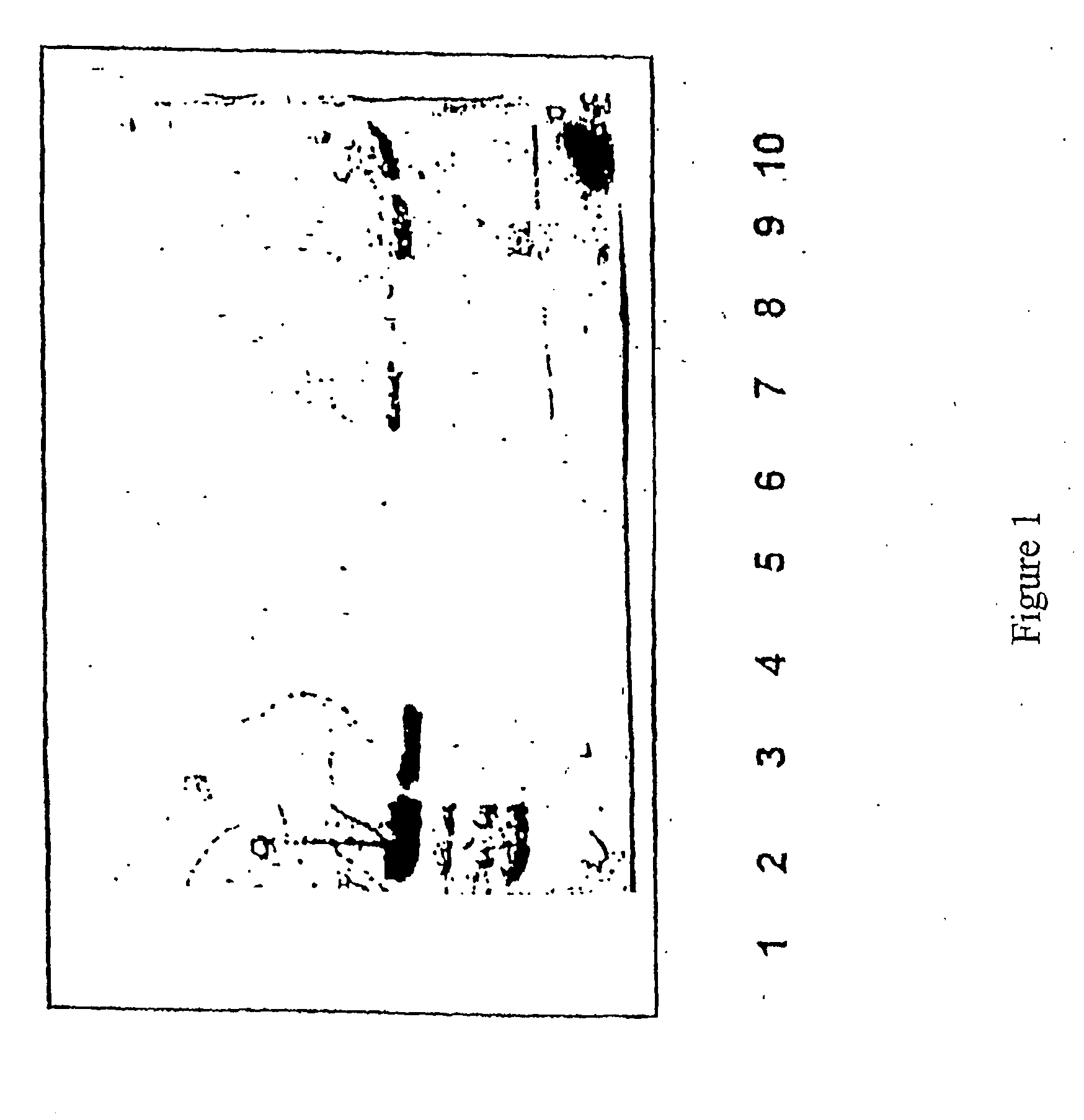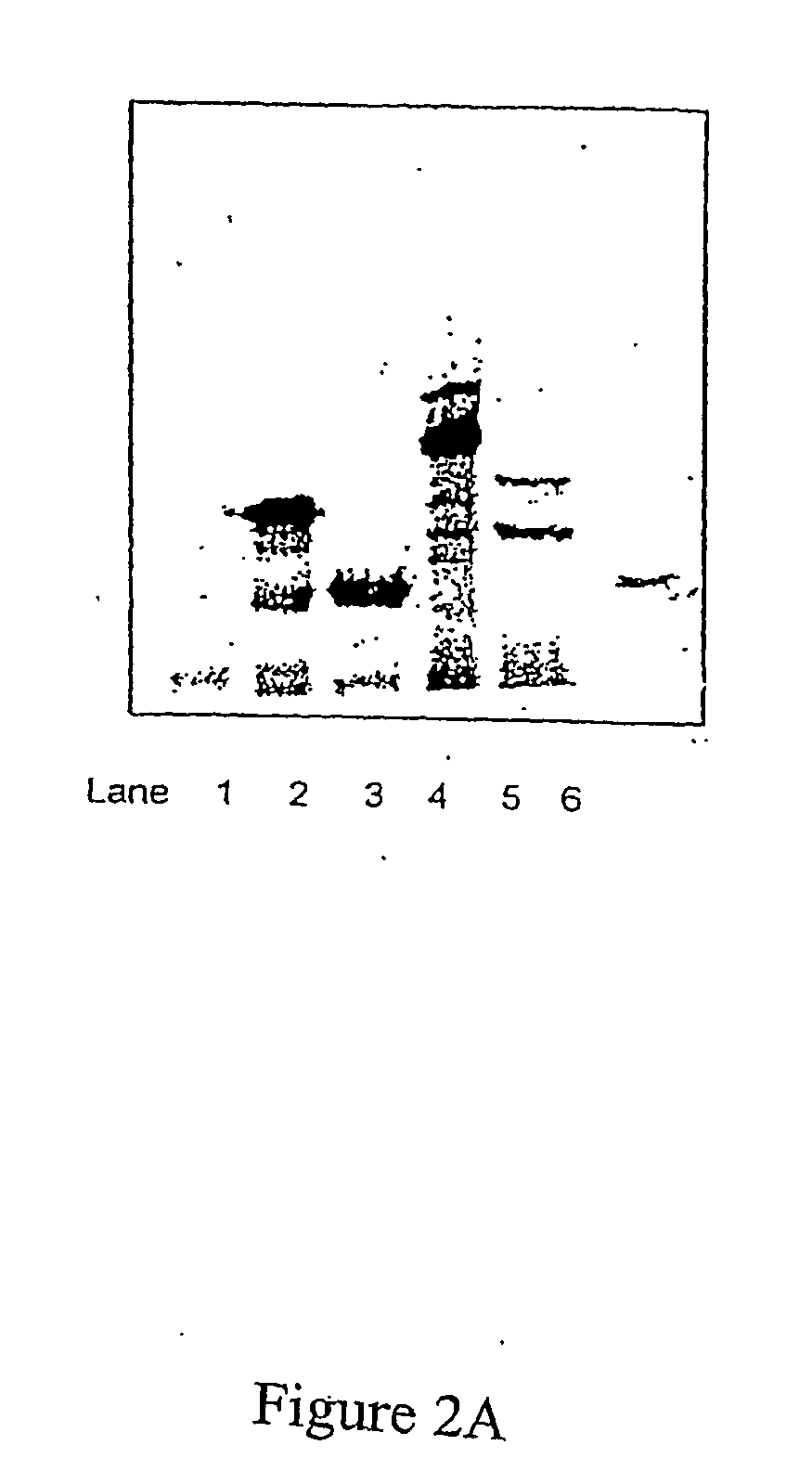Methods for the Detection of Colorectal Cancer
a colorectal cancer and method technology, applied in the field of non-radioactive markers, can solve the problems of limited effectiveness of methods, inability to generalize the detection of nascent proteins by site-specific incorporation of non-native amino acids, and inability to provide general means of incorporating non-native amino acids into nascent proteins
- Summary
- Abstract
- Description
- Claims
- Application Information
AI Technical Summary
Problems solved by technology
Method used
Image
Examples
example 1
Cell-Free Translation Reactions
[0399]The incorporation mixture (100 μl) contained 50 μl of S-23 extract, 5 mM magnesium acetate, 5 mM Tris-acetate, pH 7.6, 20 mM Hepes-KOH buffer, pH 7.5; 100 mM potassium acetate, 0.5 mM DTT, 0.375 mM GTP, 2.5 mM ATP, 10 mM creatine phosphate, 60 μg / ml creatine kinase, and 100 μg / ml mRNA containing the genetic sequence which codes for bacterioopsin. Misaminoacylated PCB-lysine or coumarin amino acid-tRNAlys molecules were added at 170 μg / ml and concentrations of magnesium ions and ATP were optimized. The mixture was incubated at 25° C. for one hour.
example 2
Incorporation Of Various Fluorophores Into α-Hemolysin
[0400]E. coli tRNAfmet was first quantitatively aminoacylated with methionine and the α-amino group was specifically modified using NHS-derivatives of several fluorophores. The list of fluorescent reporter molecules (fluorophores) tested and their properties are given in Table 2. Under the modification conditions, the modified Met-tRNAfmet is found to be stable as assessed by acid-urea gel. Since all the fluorescent molecules tested have different optical properties (excitation and emission), we have determined their relative fluorescence intensity under the condition which were used for the quantitation of gels containing nascent protein.
[0401]Fluorescent detection of nascent protein was first evaluated using α-hemolysin (α-HL) as a model protein (with C-terminal His6-tag). α-HL is a relatively small protein (32 kDa) and could be produced efficiently in in vitro translation. In addition, its activity can be measured directly in ...
example 4
Triple Marker System
[0411]In this example, a three marker system is employed to detect nascent proteins, i.e. an N-terminus marker, a C-terminus marker, and an affinity marker (the latter being an endogenous affinity marker). The experiment involves 1) preparation of a tRNA with a marker, so that a marker can be introduced (during translation) at the N-terminus of the protein; 2) translation of hemolysin with nucleic acid coding for wild type and mutant hemolysin; and 4) quantitation of the markers.
[0412]1. Preparation of Biotin-Methionyl-tRNAfmet
[0413]The purified tRNAfmet (Sigma Chemicals, St. Louis, Mo.) was first aminoacylated with methionine. The typical aminoacylation reaction contained 1500 picomoles (−1.0 OD260) of tRNA, 20 mM imidazole-HCl buffer, pH 7.5, 10 mM MgCl2, 1 mM methionine, 2 mM ATP, 150 mM NaCl and excess of aminoacyl tRNA-synthetases (Sigma). The reaction mixture was incubated for 45 min at 37° C. After incubation, the reaction mixture was neutralized by addin...
PUM
| Property | Measurement | Unit |
|---|---|---|
| dry weight | aaaaa | aaaaa |
| temperature | aaaaa | aaaaa |
| mass | aaaaa | aaaaa |
Abstract
Description
Claims
Application Information
 Login to View More
Login to View More - R&D
- Intellectual Property
- Life Sciences
- Materials
- Tech Scout
- Unparalleled Data Quality
- Higher Quality Content
- 60% Fewer Hallucinations
Browse by: Latest US Patents, China's latest patents, Technical Efficacy Thesaurus, Application Domain, Technology Topic, Popular Technical Reports.
© 2025 PatSnap. All rights reserved.Legal|Privacy policy|Modern Slavery Act Transparency Statement|Sitemap|About US| Contact US: help@patsnap.com



